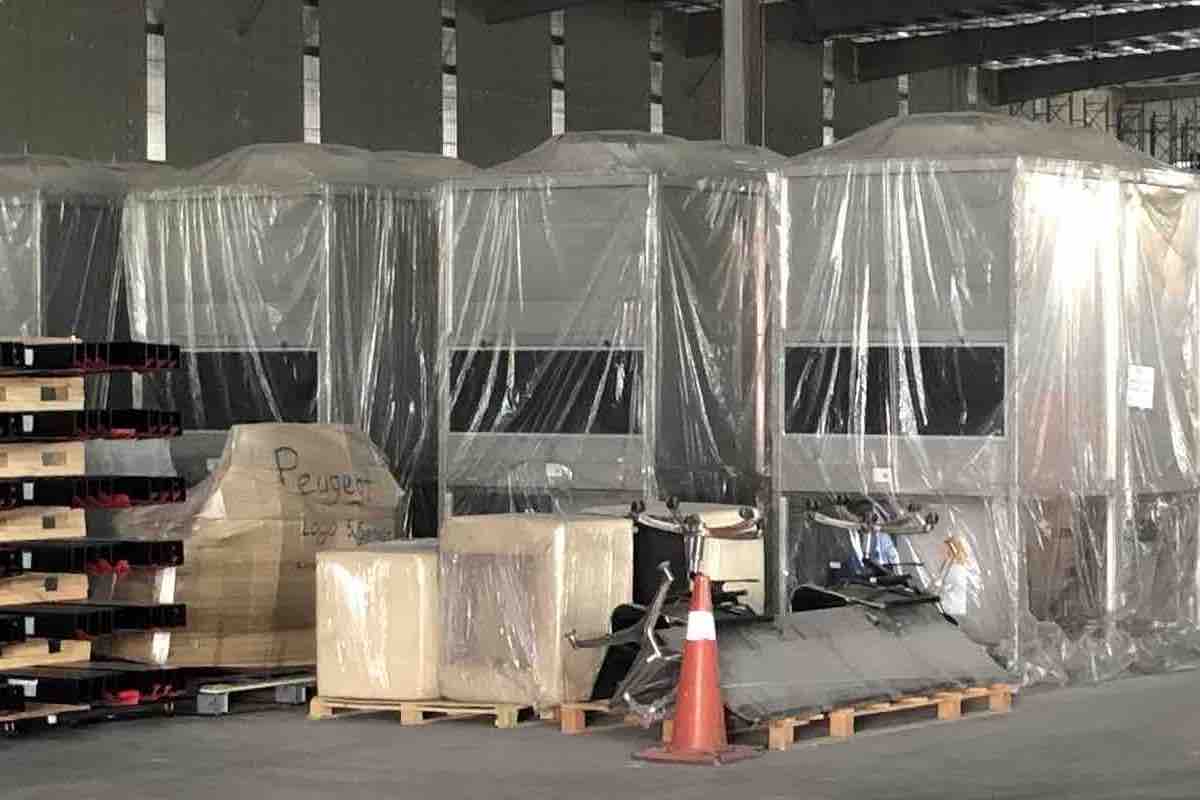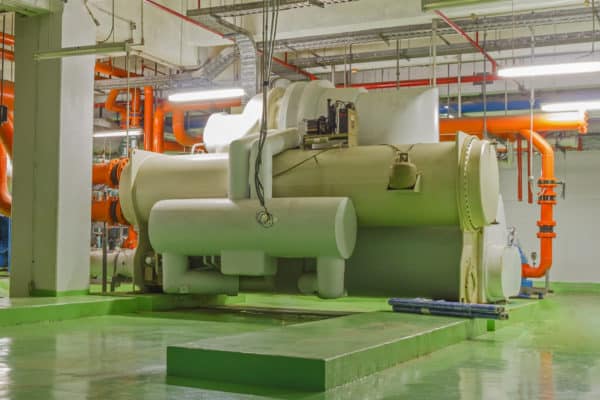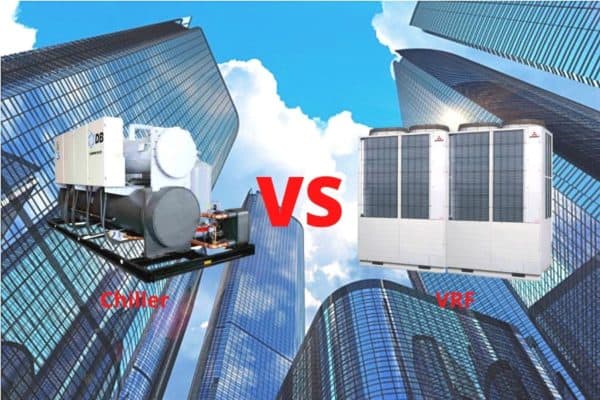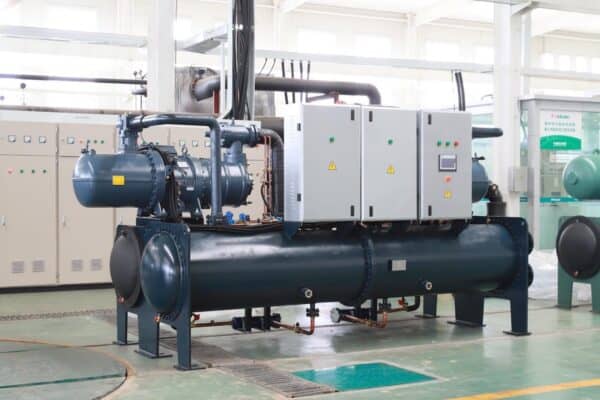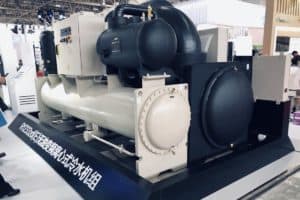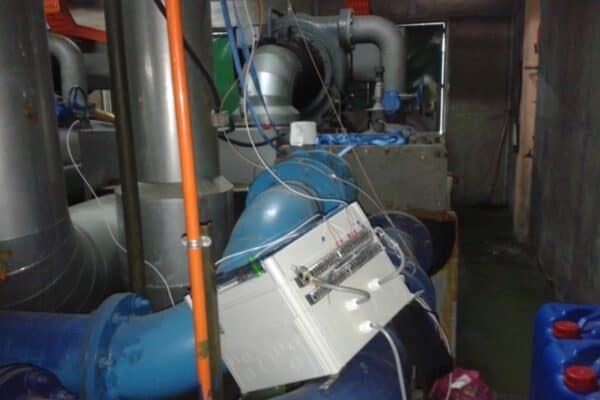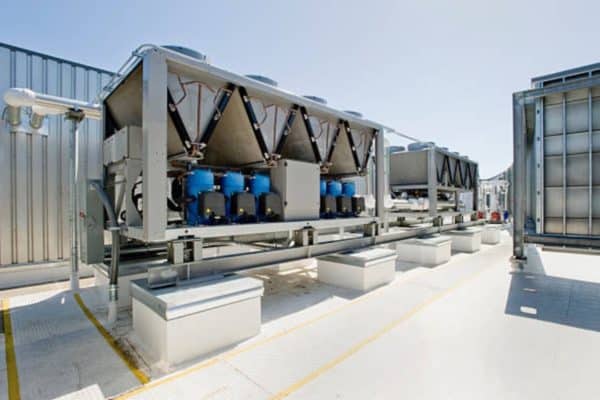What is a Hybrid Chiller?
There are many different types of chillers in HVAC but what is a hybrid chiller? I was working on an office building construction project with hybrid chillers. Although I have some experience with hybrid chillers, I did further research as well.
A hybrid chiller is an evaporative air-cooled chiller that uses evaporative cooling for heat rejection to lower the refrigerant condensing temperature and achieve higher efficiency. A hybrid chiller is the combination of an air-cooled chiller and a cooling tower.
Hybrid chillers are more efficient than air-cooled chillers but the initial cost is higher. However, they are an efficient option for engineers when designing the HVAC system of a building.
How Hybrid Chillers Work?
Hybrid chillers deploy the R410A refrigerant to absorb heat energy from the chilled water via a brazed-plate heat exchanger. Inside the heat exchanger, the refrigerant and the chilled water have no physical contact.
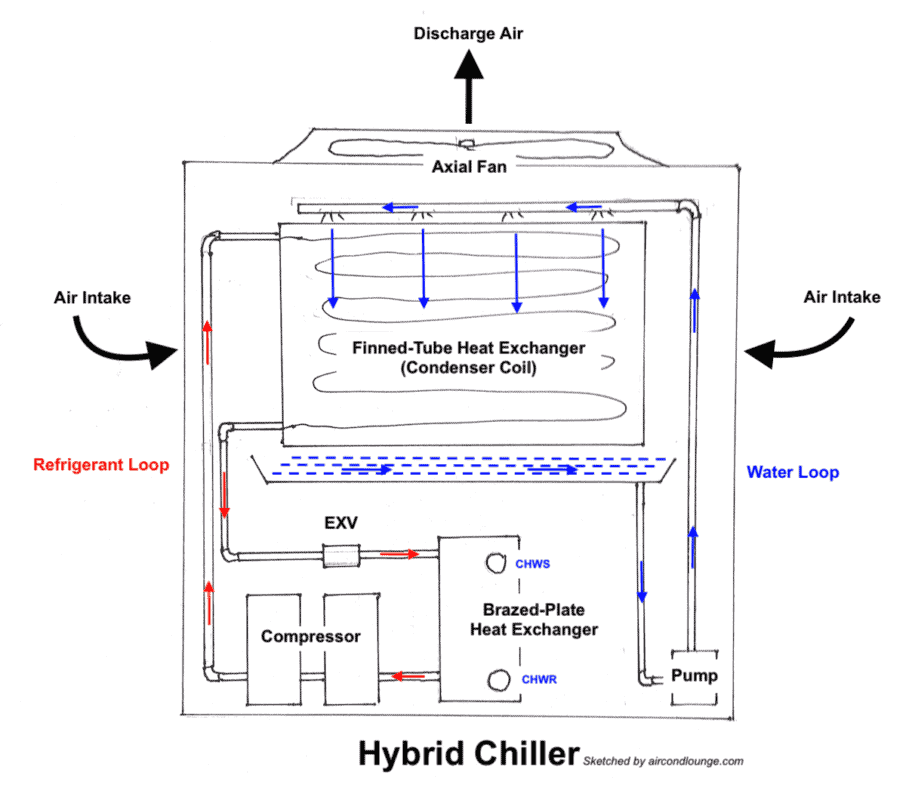
Hybrid chillers usually have two on/off hermetically-sealed scroll compressors, each carrying 50% of its total cooling capacity. Therefore, the minimum load of a single hybrid chiller is 50% of its total cooling capacity.
However, hybrid chillers can have variable speed drive or inverter compressors too. With inverter technology, the efficiency of hybrid chillers can improve further and the minimum load no longer stuck at 50%.
Because hybrid chillers have two compressors, if one fails, they still can operate with 50% capacity.
Hybrid chillers come in modules which means that they can be joined like legos to increase the total cooling capacity. With the increasing number of hybrid chillers, the overall reliability of the system increases since each compressor serves as a backup to others.
From the compressor, the refrigerant is sent to the condenser coil which is normally made of copper tubes and aluminum fins. However, hybrid chillers are mostly using stainless steel tubes and fins to resist corrosion since water is constantly poured onto the condenser coil.
Hybrid chillers work using the refrigeration cycle just like any other air conditioner. However, they have extras such as a basin, a circulation pump and nozzles to spray water onto the condenser coil just like cooling towers.
And similar to cooling towers, hybrid chillers need to bleed off their condenser water occasionally to prevent the built-up of minerals in their basin. Evaporative and drift losses are also unavoidable. Hence, they need a make-up water tank to replenish the water.
As for the chilled water loop, everything is the same as air-cooled and water-cooled chilled water systems with chilled water pumps, air handling units and fan coil units.
On a side note, if you want to quickly learn about chilled water system, you can get my Chilled Water System (eBook). If you’re into design, you can enroll in my Chilled Water System Design Course where I teach you various design procedures with tons of examples.
Chilled Water System Design Course
Learn how to design a chilled water system with AHU/FCU selection, chiller sizing, cooling tower sizing, pump sizing, piping design, ductwork design and more.
Why Hybrid Chillers are More Efficient?
Hybrid chillers work by the principle of evaporative cooling using water. Evaporative cooling relies on the wet bulb temperature rather than the dry bulb temperature and because the former is lower, hybrid chillers have lower condensing pressure.
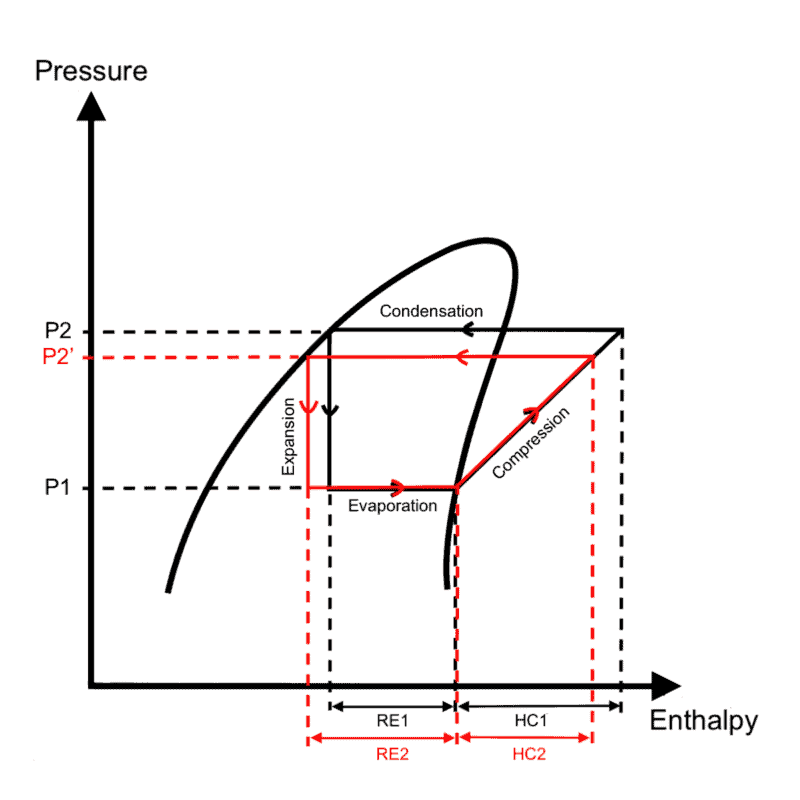
In the above PH diagram, the cycle in black color represents a typical air-cooled chiller while the cycle in red color represents a typical hybrid chiller.
Gas Law (PV = nRT) stated that when the condensing temperature is decreased, the condensing pressure is also decreased. Hence, the condensing pressure of hybrid chillers is lower than air-cooled chillers as shown in the above diagram.
RE2 > RE 1
HC2 < HC1
When the condensing pressure (P2) is decreased, the refrigeration effect (RE) is increased and the compressor work (HC) is reduced.
- Refrigeration effect = Cooling capacity
- Compressor work = Power consumption
COP = RE / HC
COP1 = RE1 / HC1, COP2 = RE2 / HC2
COP1 < COP2
Since COP (coefficient of performance) equals RE divided by HC, by lowering the condensing temperature, hybrid chillers achieve higher efficiency.
Some manufacturers claimed that their hybrid chillers can achieve an efficiency of about 0.75 kW per refrigeration ton while many air-cooled chillers are only able to achieve an efficiency of around 1.00 kW per refrigeration ton.
1 refrigeration ton (RT) equals 12,000 btu per hour
On a side note, many water-cooled chillers have an efficiency of around 0.55 kW per refrigeration ton. Hence, the efficiency of hybrid chillers is sandwiched between air-cooled chillers and water-cooled chillers.
Pros and Cons of Hybrid Chillers
Hybrid chillers are developed to give engineers more options when designing the HVAC system for buildings. So, let’s take a look at some of the advantages and disadvantages of hybrid chillers.
Pros:
- Better efficiency than other air-cooled units such as air-cooled chillers, air-cooled VRF system, single split and multi split units.
- Come in modules which give more flexibility in design and improve the overall reliability of the system.
- Easy to install due to a single packaged unit rather than separated cooling towers and condenser pumps.
- Save a lot of floor areas due to compact design.
Cons:
- Higher initial cost if opt for full stainless steel body and heat exchangers. Otherwise, maintenance cost is high when components are corroded and need replacement.
- Individual cooling capacity is low compared to water-cooled chillers and hence, large quantity is needed which complicates the control process.
- Not easy to achieve good part-load efficiency if operation control is not well-done.
- Large systems have tons of internal components (expansion valves, sensors, compressors, etc.) which may cause high maintenance cost.
- Certain regions with high wet bulb temperature may cause hybrid chillers to work ineffectively.
Conclusion
When fit in the right application, hybrid chillers offer good efficiency than any other air-cooled air conditioners. However, maintaining the coil performance is a challenge when water is constantly causing corrosion.
Nevertheless, hybrid chillers give an extra option for engineers when designing the HVAC system for buildings. The efficiency of hybrid chillers is sandwiched between air-cooled chillers and water-cooled chillers.
Hybrid chillers have their pros and cons. One of the major drawbacks is the high initial cost with full stainless steel heat exchangers to resist corrosion.
Lastly, having too many modular hybrid chillers complicate the control process and potentially cause high maintenance cost which could offset any savings from the higher efficiency.
Once again, you can get my Chilled Water System (eBook) to quickly learn more about chilled water system. But, if you want to learn how to design a chilled water system from start to end, I encourage you check out my Chilled Water System Design Course.
Chilled Water System Design Course
Learn how to design a chilled water system with AHU/FCU selection, chiller sizing, cooling tower sizing, pump sizing, piping design, ductwork design and more.
If you have anything to add (or ask) about this topic, leave a comment down below!


